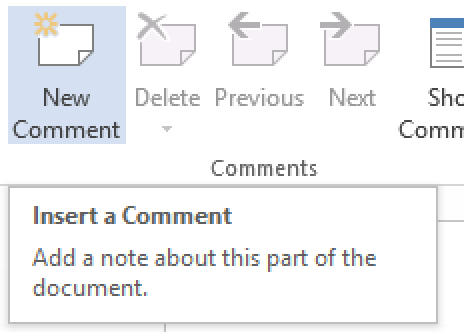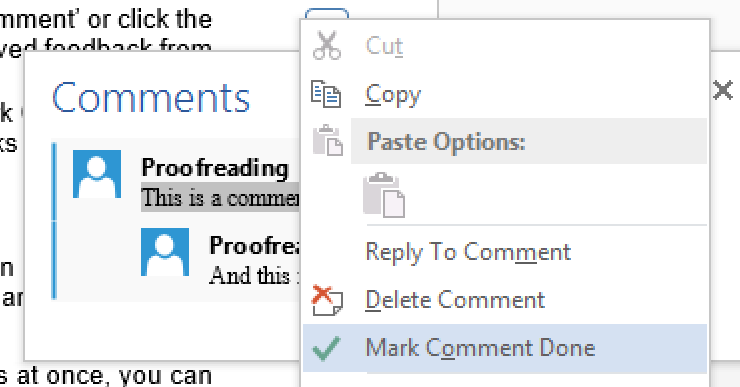- 4-minute read
- 2nd March 2017
4 Tips on Using Comments in Microsoft Word
Microsoft Word has many features that might escape the attention of the casual user, one of which is the comment function. You can use comments when planning an essay or to remind yourself to check something while writing.
Alternatively, you might send a document to someone for feedback (or proofreading) and have it returned covered in little notes! But whatever the reason, knowing how to use the comment function will make you a more effective Microsoft Word user.
1. Adding a New Comment
There are three ways to add a comment to a document. In all cases, the first thing to do is select the text you want to comment on using the cursor. After that you can:
- Go to the ‘Review’ tab on the main ribbon and click ‘New Comment’.

Adding a comment via the ‘Review’ tab. - Right-click the highlighted text and select ‘New Comment’ from the contextual menu.

Adding a comment via the contextual menu. - Use the shortcut Ctrl + Alt + M.
Once a comment has been added, simply click it and type your note.
2. Viewing Comments
The ‘Show Comments’ button in the ‘Comments’ section of the ‘Review’ tab lets you control how comments are displayed: either as small speech bubble icons or in full. Clicking it once will display comments fully. Clicking it again will revert to speech bubbles.
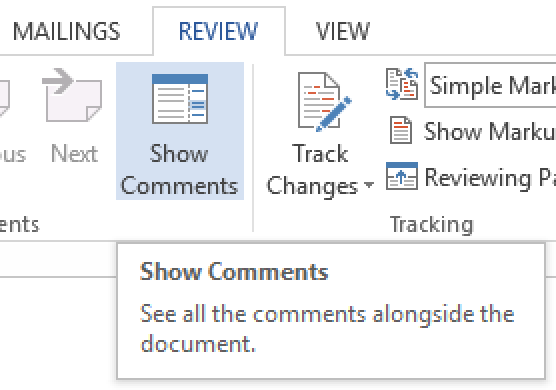
The speech bubble option is useful if you have a lot of comments in a document, as it means they don’t become distracting. To view a comment, simply click the relevant bubble.
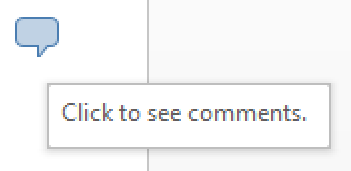
You can also stop comments from being displayed at all, only show comments by specific reviewers, or set comments to be shown in the main document when you hover the cursor over the relevant text. All this is done via the ‘Show Markup’ menu.
Find this useful?
Subscribe to our newsletter and get writing tips from our editors straight to your inbox.
Subscribe to Beyond the Margins and get your monthly fix of editorial strategy, workflow tips, and real-world examples from content leaders.
3. Managing Comments
There are several ways to interact with comments. The most basic is using the ‘Next’ and ‘Previous’ buttons to cycle between them. You can also just click on a comment to select it, of course, but using ‘Next’ and ‘Previous’ means you won’t miss one by accident.
In addition, you can either reply to a comment or mark it as read:
- To reply to a comment, either right-click on it and select ‘Reply To Comment’ or click the small icon in the top right corner. This option is useful if you have received feedback from someone and you are sending them a new draft for further review.

You can also comment on a comment on a comment. But that way madness lies. - To mark a comment as read, right-click the comment and select ‘Mark Comment Done’ from the menu. This is useful if you’re using comments to list tasks when editing a document, as you can tick each one off when done.

Marking a comment as done.
4. Deleting a Comment
Deleting a single comment is as simple as selecting it and clicking ‘Delete’ in the ‘Comments’ section of the ‘Review’ tab. Alternatively, you can right-click the comment and select ‘Delete Comment’ from the contextual menu.
Finally, if you’ve finished editing a document and want to remove every comment at once, you can click the little arrow on the ‘Delete’ button in the ‘Review’ tab and select ‘Delete All Comments in Document’ from the dropdown menu.
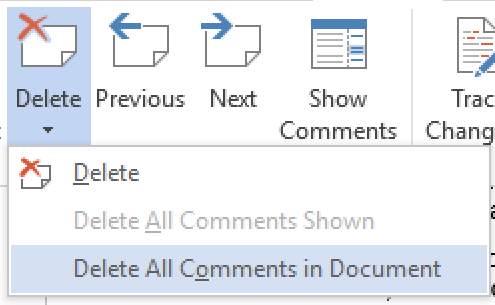
Make sure you’ve checked every comment before doing this, though, as you might accidentally delete something you haven’t addressed yet!
